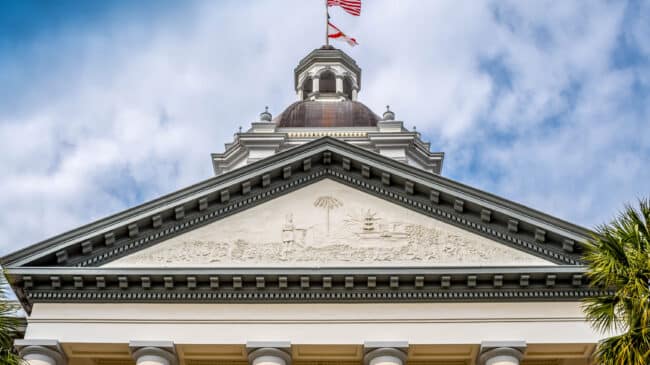Full Analysis: Modernizing Florida Retirement
During the 2021 legislative session, Florida lawmakers considered a proposal that they hoped would eliminate the financial risk public sector pensions currently pose for the state. The legislation, Senate Bill 84, aimed to limit the growth of the nearly $30 billion in Florida Retirement System (FRS) unfunded liabilities by requiring newly hired state and local employees to join the state’s defined contribution FRS Investment Plan. The measure ultimately stalled in the Florida House of Representatives after being approved by the majority of senators. Since then, Senate President Wilton Simpson has signaled interest in renewing the conversation during the 2022 legislative session while Governor Ron DeSantis included FRS Investment Plan benefits increases as part of his 2022-2023 budget recommendations.
Senate Bill 84 intended to close the defined benefit FRS Pension Plan to all new hires (except Special Risk members). But the bill did not include other funding or risk-related policy changes. Increasing contributions to bring FRS Investment Plan benefits up to industry standard is required for long-term solvency but only if reform includes a plan to tackle current liabilities.
The following analysis examines Senate Bill 84 and its impact on risk and cost compared to maintaining the state’s retirement plan status quo. Drawing on public pension policy best practices, the analysis offers an alternative policy package that, unlike Senate Bill 84, preserves the current retirement choice structure and applies solutions to pay down current debts, avoids future unfunded liabilities, and build on making the FRS Investment Plan much more attractive to future public employees.
The alternative reform scenario offered by the Pension Integrity Project keeps both the FRS Pension Plan and FRS Investment Plan open but also institutes the following changes:
- Gradually reduces the FRS Pension Plan’s assumed rate of return from 6.8% to 6% over 8 years.
- Adopts a 50-50 cost sharing policy for new Regular employees.
- Raises by 2% each the employee and employer contribution towards a member’s FRS Investment Plan – a 4% increase in total. (Governor DeSantis 2022-2023 Budget Proposal)
- Reduces the amortization period for new UAAL layers from 25 years to 15 years.
In order to make a comparison between the status quo, SB 84 and the alternative reform scenarios, the following assumptions were made:
- FRS is assumed to reset amortization payments and UAAL bases to zero after full funding.
- FRS is assumed to reset the AVA to match the MVA after full funding.
The alternative scenario intends to:
- Allow current unfunded liabilities to be paid off under most future market scenarios,
- Cost approximately the same or less than SB 84, and
- Ensure benefit adequacy.
Full Analysis: Modernizing Florida Retirement
Stay in Touch with Our Pension Experts
Reason Foundation’s Pension Integrity Project has helped policymakers in states like Arizona, Colorado, Michigan, and Montana implement substantive pension reforms. Our monthly newsletter highlights the latest actuarial analysis and policy insights from our team.
